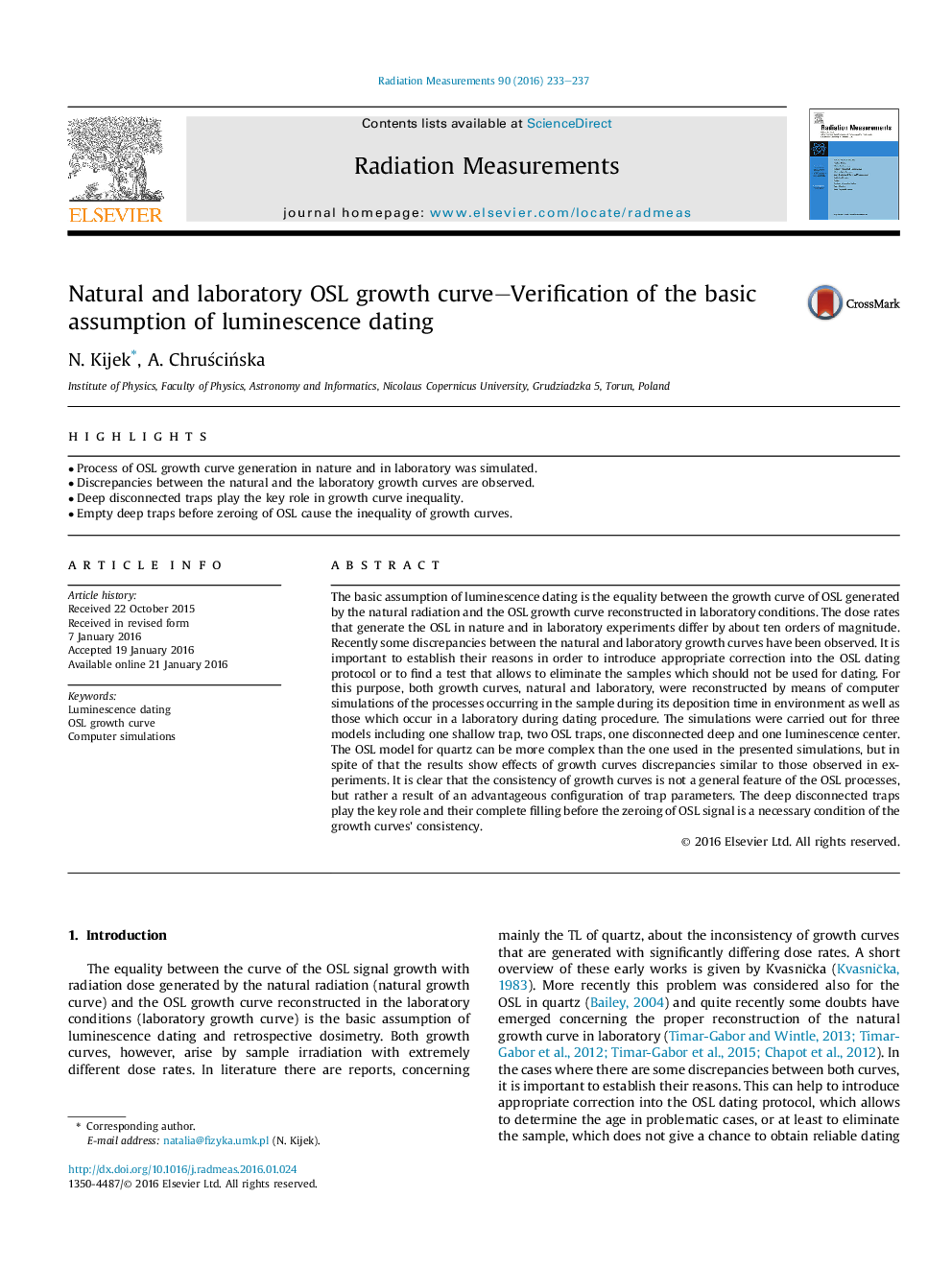| Article ID | Journal | Published Year | Pages | File Type |
|---|---|---|---|---|
| 1888049 | Radiation Measurements | 2016 | 5 Pages |
•Process of OSL growth curve generation in nature and in laboratory was simulated.•Discrepancies between the natural and the laboratory growth curves are observed.•Deep disconnected traps play the key role in growth curve inequality.•Empty deep traps before zeroing of OSL cause the inequality of growth curves.
The basic assumption of luminescence dating is the equality between the growth curve of OSL generated by the natural radiation and the OSL growth curve reconstructed in laboratory conditions. The dose rates that generate the OSL in nature and in laboratory experiments differ by about ten orders of magnitude. Recently some discrepancies between the natural and laboratory growth curves have been observed. It is important to establish their reasons in order to introduce appropriate correction into the OSL dating protocol or to find a test that allows to eliminate the samples which should not be used for dating. For this purpose, both growth curves, natural and laboratory, were reconstructed by means of computer simulations of the processes occurring in the sample during its deposition time in environment as well as those which occur in a laboratory during dating procedure. The simulations were carried out for three models including one shallow trap, two OSL traps, one disconnected deep and one luminescence center. The OSL model for quartz can be more complex than the one used in the presented simulations, but in spite of that the results show effects of growth curves discrepancies similar to those observed in experiments. It is clear that the consistency of growth curves is not a general feature of the OSL processes, but rather a result of an advantageous configuration of trap parameters. The deep disconnected traps play the key role and their complete filling before the zeroing of OSL signal is a necessary condition of the growth curves' consistency.
